Introduction
Front
{{section_header}}{{section.name}}{{/section_header}}
The front of the Panasonic TC-P65VT30 has an attractive, uniform glossy front, similar to what we've seen on the 2010 Sonys with their "monolith" design.
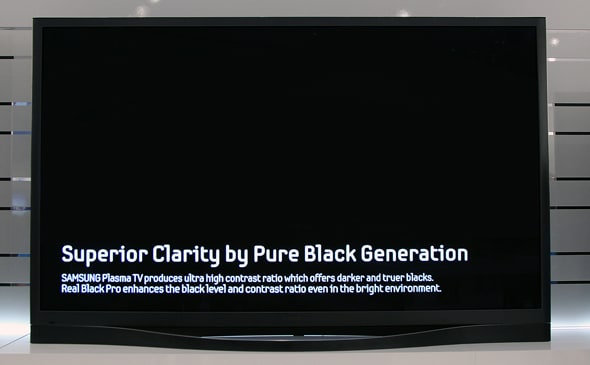
Back
{{section_header}}{{section.name}}{{/section_header}}
The back was difficult for us to see, as is normally the case for the wall-mounted units at a trade show. You're not missing much, though. We feel pretty safe predicting that it's large, flat, and black.
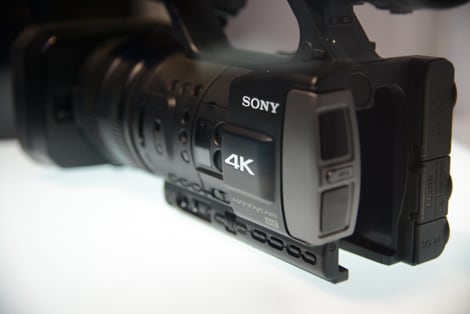
Sides
{{section_header}}{{section.name}}{{/section_header}}
The sides of the Panasonic TC-P65VT30 illustrate how much thinner this TV is than older Panasonic plasmas. We'd like to offer our congratulations to the engineering team on this one.

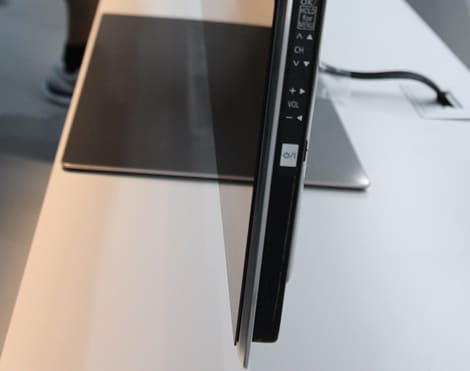
Stand/Mount
{{section_header}}{{section.name}}{{/section_header}}
As the TV was wall-mounted, we didn't get a look at the mount. The stand on last year's VT20 series was a cheap looking piece of dull plastic with a stumpy neck. They can only get betting looking, because it couldn't possibly be worse than before.

Aesthetics
{{section_header}}{{section.name}}{{/section_header}}
It appears that Panasonic is taking design more seriously in 2011. After Samsung left everyone in the dust with their innovative designs in the C7000, C8000, and C9000 series. Panasonic's new VT30 plasma series is far thinner and less boxy than last year. The facade is covered with a single piece of glass from edge to edge – much sleeker than previously.
Display Size & Technology
{{section_header}}{{section.name}}{{/section_header}}
The Panasonic TC-P65VT30 is a 1080p, 65-inch plasma TV capable of producing a 3D display with the use of active shutter glasses. The current techno-war between active shutter and passive shutter (as well as glasses-free 3D, to a lesser extent) is still be waged, but Panasonic is clearly fixed in the active shutter camp.

There's just one other model in the VT30 series, a 55-inch model. It retains the same 1080p resolution and 3D capabilities.
Formats & Resolution
{{section_header}}{{section.name}}{{/section_header}}
The Panasonic TC-P65VT30 has a native 1080p display (1920 x 1080), and is capable of displaying all NTSC signals. 1080p is still the highest resolution in common home TVs, though we've seen several 2K and 4K displays that are creeping into the market, usually in professional displays.
Brightness, Blacks and Contrast Ratio
{{section_header}}{{section.name}}{{/section_header}}
The press materials so far have no material on the contrast level of the Panasonic TC-P65VT30, nor did they have those numbers on the show floor. However, they're making a lot of noise about the new Infinite Black Pro 2 panel that is supposed to make the blacks even blacker. We can't say that black level was any sort of problem last year, though. Plasmas are always great at producing deep blacks. Brightness was and always has been the problem with plasmas, which is only exacerbated when you put the 3D glasses on.
Color
{{section_header}}{{section.name}}{{/section_header}}
The color performance should be very good in the Panasonic TC-P65VT30, because it has THX certification. In our experience, putting Panasonics in the THX mode doesn't necessarily give you perfect color, but it's usually very good.
Motion & Refresh Rate
{{section_header}}{{section.name}}{{/section_header}}
The Panasonic TC-P65VT30 has a 600Hz subfield refresh, which should suffice perfectly. It also has a 24p playback mode for use with Blu-Ray and other 24p content.
Viewing Angle
{{section_header}}{{section.name}}{{/section_header}}
The viewing angle on plasmas has always been one of their biggest benefits. Last year's Panasonic TC-P50VT20 was nearly 160 degrees. Even your widest rooms will be safe with a plasma.
3D Glasses
{{section_header}}{{section.name}}{{/section_header}}
The Panasonic TC-P65VT30 uses active shutter glasses in order to produce the 3D effect. Active shutter glasses are heavy, awkward, ugly, and expensive. They received a lot of flack in 2010, so manufacturers are trying to redesign them to make them a little less heavy, ugly, etc. But they're still a long way away from the cheapness and comfort of passive 3D glasses, which are similar to what you've experienced in movie theaters.
One pair of glasses comes included with purchase of the TV. Additional glasses will likely retail for $150 per pair.
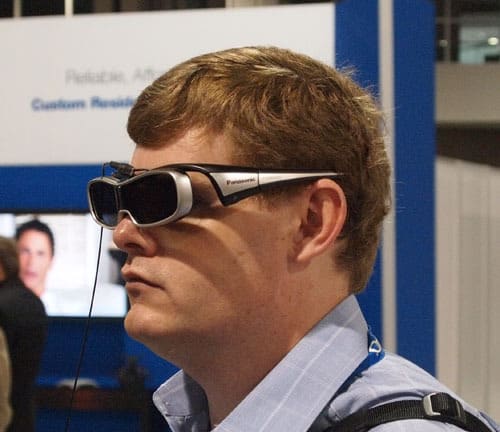
There's no getting around the fact that 3D glasses make you look ridiculous (and possibly feel ridiculous too).

The power button makes the glasses usable for viewing 3D by turning on the active shutter feature.
3D Effect
{{section_header}}{{section.name}}{{/section_header}}
Most of the experts, including us, are in agreement that plasma offers a better active shutter 3D experience than LCD. In our own lab testing of last year's models, we noticed less cross-talk, the phenomenon in which images intended for one eye bleed into the other eye. We're still of the general opinion that 3D TV is still more headache-inducing trouble than it's worth, but the manufacturers are shoving it so hard down the public's throat that it's hard to ignore.
Audio & Video Ports
{{section_header}}{{section.name}}{{/section_header}}
Being the flagship model, the Panasonic TC-P65VT30 has all the ports that you could possibly want for a home theater hub. Despite the thinner frame, Panasonic still found room for 4 HDMIs, 1 component AV input, 1 composite AV input, VGA input, cable/antenna, digital audio output, and monitor output.
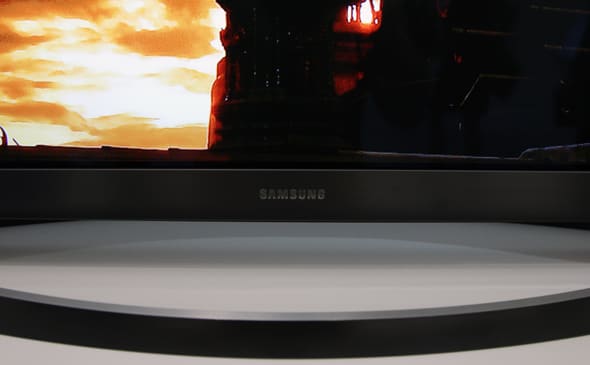
For multimedia purposes, you get an ethernet port, an SD/SDHC port, and 2 USB inputs that read USB mass storage devices and an optional WiFi dongle. For pro calibration, there's also an RS-232C connection. Panasonic did not hold back on this one. However, those hoping to connect a lot of older devices that use RCA cables may be out of luck with only one component and one composite.

Internet & Other Media
{{section_header}}{{section.name}}{{/section_header}}
For 2011, Panasonic has stepped up its online offerings (to a degree). What was once called Viera Cast has been re-branded as Viera Connect. There major difference is that Panasonic has dropped the walled garden approach for content providers and opened it up to third parties for app development. It's the same approach that Sony, Samsung, LG, and others have taken into order to promote their TVs as content-rich entertainment hubs, unconfined by mere cable providers.
Placement
{{section_header}}{{section.name}}{{/section_header}}
The ports are placed along the back and side of the TV. It does not appear that the TV can swivel on its panel, so reaching them may be a little tricky.
Remote
{{section_header}}{{section.name}}{{/section_header}}
Unfortunately, we were not able to see the remote control that's going to ship with the Panasonic TC-P65VT30. Chances are, it will look very similar to remote that shipped with last year's VT20/25.

Controls
{{section_header}}{{section.name}}{{/section_header}}
In previous years, the fat frame of Panasonic's plasma TVs was wide enough to fit all the controls. The newer, skinnier Panasonic TC-P65VT30 has a series of onboard controls tucked away behind the right-hand side of the frame. They're a little harder to reach, but we'll accept that for the far more stylish design. Controls include volume, channel up/down, menu, and input. The power button is on the front.
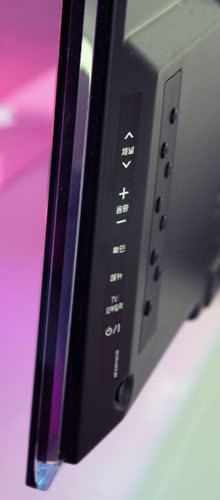
Menu
{{section_header}}{{section.name}}{{/section_header}}
Sadly, we were not allowed to play with the menu on the Panasonic TC-P65VT30 that was on display.
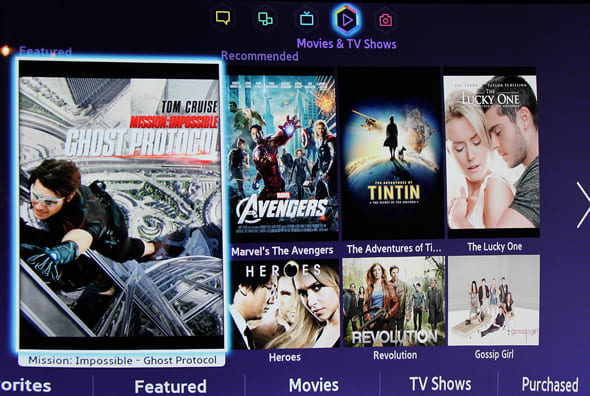
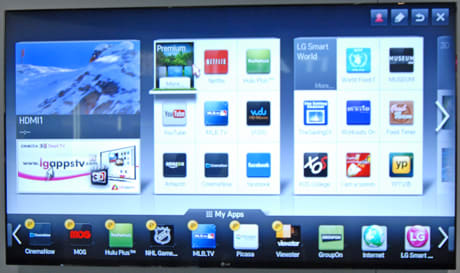
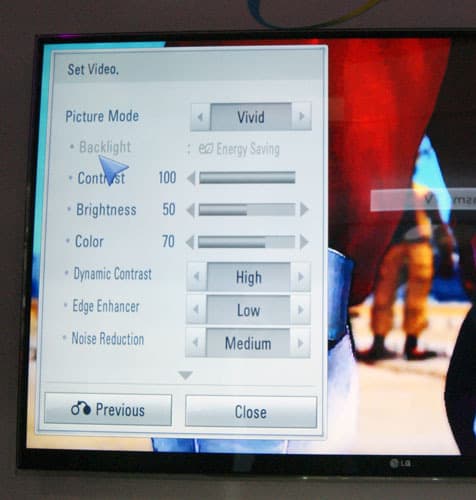
Conclusion
{{product.vanity}}
The changes made by Panasonic from last year's VT20/25 series to the new VT30 are impressive. Most of the upgrades are feature based, including a vastly more attractive design and an improved streaming content package. The performance enhancements are fairly modest, and we can't really verify them until we get it in the labs. They're claiming an improved black level (and by extension, a wider contrast ratio), but we think they should have focused on brightening the screen, which we cited as a major problem last year. Panasonic did mention something about brighter screen during their press conference, but there are no details on the show floor or online about such improvements.
There have been no notable improvements to 3D performance, save for a more streamlined glasses design. The fact is that active shutter 3D, like the Panasonic TC-P65VT30 employs, is simply not an enjoyable experience. Sure, plasma TVs do active shutter much better than LCDs, but that's not enough to sway us into convincing you that it's time to buy one. Once retail prices come down and 3D becomes a de facto feature above a certain price point, we may change our minds.
Series Comparision
{{product.manufacturer_specs['Series Name']}} Series
The Panasonic VT30 series has just two models, a 65-inch and a 55-inch. Both are 3D capable 1080p displays with all the same features.
Specs
{{manufacturer_specs_table}}
Meet the tester
David Kender oversees content at Reviewed as the Editor in Chief. He served as managing editor and editor in chief of Reviewed's ancestor, CamcorderInfo.com, helping to grow the company from a tiny staff to one of the most influential online review resources. In his time at Reviewed, David has helped to launch over 100 product categories and written too many articles to count.
Checking our work.
Our team is here for one purpose: to help you buy the best stuff and love what you own. Our writers, editors, and lab technicians obsess over the products we cover to make sure you're confident and satisfied. Have a different opinion about something we recommend? Email us and we'll compare notes.
Shoot us an email
